Surfing is as much about timing as it is about technique, and catching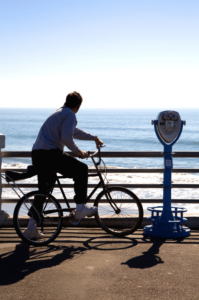 the perfect wave often comes down to knowing when – and where – to paddle out. With the right knowledge of wave prediction, you can avoid aimless waiting and make each session worthwhile.
the perfect wave often comes down to knowing when – and where – to paddle out. With the right knowledge of wave prediction, you can avoid aimless waiting and make each session worthwhile.
Most surfers are aware of all this to a certain extent, but few actually put the time or effort to read between the lines, or rather the Surflines, to dial in their craft and their search. By understanding the basics of ocean science and leveraging modern forecasting tools, surfers at any level can improve their wave selection and massively optimize their balance of time in the water and spot checks with their various personal and professional obligations.
This blog post is all about the art of wave prediction that has largely been lost on younger generations due to the ease of flipping through Surfline’s color-graded forecasts.
Understanding the Basics of Wave Formation
To predict waves, it’s essential to understand how they form. Waves are generated primarily by wind, and factors like wind speed, duration, and the distance the wind travels over open water (called “fetch”) all contribute to the creation of swells.
- Wind Speed and Fetch: Higher wind speeds and longer fetches produce larger waves. When a storm forms far out in the ocean, the resulting energy pushes waves toward shore, creating what surfers know as ground swells.
- Wind Duration: The longer the wind blows in a particular direction, the more energy is transferred to the waves, resulting in larger swells.
- Types of Waves: Ground swells, which travel long distances and hold more power, create the most surfable waves. In contrast, local winds often produce smaller, choppier wind swells.
By understanding these fundamentals, surfers can start to get a clearer picture of when ideal waves are likely to form and how far they’ll need to travel to reach them.
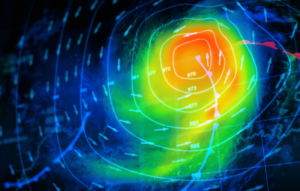
Key Elements of Wave Prediction
The next step in wave prediction involves decoding the components of surf and various weather forecasts. Key elements to focus on include swell direction, swell period, tides, and wind conditions.
- Swell Direction: Each surf break is influenced by specific swell directions. For example, some beaches might favor southwest swells, while others work best with a west or northwest swell. Knowing the ideal swell direction for your local spot can help you predict when it will be at its best.
- Swell Period: Measured in seconds, swell period refers to the time between consecutive waves. Longer swell periods (over 10 seconds) indicate more powerful, well-organized waves, while shorter periods suggest smaller, less powerful waves. As a rule, the longer the swell period, the better the wave quality for surfing.
- Tide and Tidal Cycles: Tides play a huge role in wave quality, and each spot has its preferred tide range. Some breaks work best at high tide, while others only break well during low tide. Learning the ideal tide for your favorite spot can make a noticeable difference in your surfing experience.
- Wind Conditions: Wind has a direct impact on wave quality. Offshore winds (blowing from land out to sea) help create clean, well-shaped waves, while onshore winds (blowing from the sea to the land) can make waves choppy. A day with strong offshore winds usually results in the most memorable surf sessions.
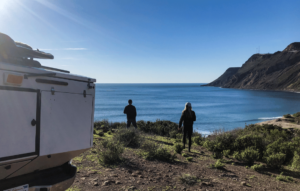
Using Surf Forecasting Tools and Apps
Thankfully, modern surf forecasting tools make it easier than ever to access real-time data about ocean conditions. Here are a few tips on using these apps to maximize your wave prediction accuracy:
- Popular Surf Forecasting Platforms: Apps like Surfline, Swellinfo, and Windy provide detailed data on wave height, swell period, swell direction, and wind speed.
- Interpreting Data: Check the app for the details on swell direction, period, and wind conditions before heading out – don’t just rely on the algorithms to tell you whether or not it’s worth the paddle. Forecasts typically give data at least a few days in advance, allowing you to plan your sessions strategically.
- Setting Alerts: Many surf apps offer custom alerts so you can be notified when the forecast matches your favorite conditions. Customization can be huge if you’re in an area where the algorithms for surf prediction apps have not been updated by someone who is regularly paddling out at specific breaks; beaches are always changing. Set alerts for specific swell periods, directions, and wind conditions to make sure you don’t miss an ideal day.
Using these tools not only simplifies the process but allows surfers to make informed decisions rather than relying on guesswork or outdated algorithms.
Local Knowledge and Observational Skills
Wave prediction isn’t just about checking the latest forecast; it also requires building a personal connection with your local surf spots. Each location has unique characteristics based on factors like underwater topography (bathymetry), nearby structures, and coastal geography.
- Bathymetry: The shape of the ocean floor affects how waves break. Reef breaks, point breaks, and beach breaks all have different characteristics, and the same swell will behave differently at each one.
- Observing Patterns: Spend time watching how waves break at different tides and under various swell directions. With time, you’ll notice patterns that will continually improve your predictions.
- Learning the Locals’ Insights: Local surfers, especially older folks, are often well-versed in the intricacies of their breaks. Observing and talking with experienced surfers at your chosen spot or the local surf shop can help you pick up on nuances that surf forecasts might miss.
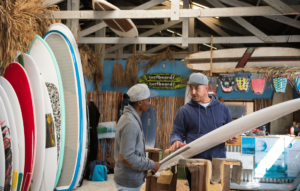
Practical Tips for Applying Wave Prediction in Real-Time
Once you’ve studied the forecast and gathered local insights, it’s time to put your knowledge into action. Here are some practical tips for optimizing your surf sessions:
- Arrive Early: Timing is crucial, especially when working with a limited swell period or favorable wind window. Arriving early gives you a chance to observe the conditions and adapt if and when necessary.
- Be Patient for the Sets: Waves usually come in sets, with larger, cleaner waves spaced between smaller or choppier ones. Knowing how to wait for the right wave in a set can greatly improve your wave selection and also completely change your paddle-out approach.
- Adapt to Changing Conditions: Ocean conditions are always changing. If the wind shifts or the tide changes mid-session, try moving to another part of the break that suits the new conditions.
Building Your Confidence as a Wave Forecaster
Learning to predict waves is a skill that improves with time and experience. Here are some ways to keep progressing:
- Keep a Surf Journal: Track the conditions each time you surf specific spots.
 Note down swell direction, swell period, wind, and tide along with your observations about wave quality. Over time, you’ll start seeing patterns that can refine your predictions.
Note down swell direction, swell period, wind, and tide along with your observations about wave quality. Over time, you’ll start seeing patterns that can refine your predictions. - Experiment with Different Conditions: Try surfing in a variety of conditions to expand your knowledge of what works best. Being adaptable and open to learning will help you gain a deeper understanding of wave behavior.
- Stay Curious and Keep Learning: Wave prediction is a blend of science and art. Follow updates from meteorologists, learn more about oceanography, talk to the old guys at your local surf shop, and continue to refine your forecasting skills – it’s a lifelong journey.
Conclusion
Deepening your understanding of wave prediction is a game-changer if you want to make the most of your time in the water. By understanding the science behind wave formation, interpreting key forecast elements, and blending data with local knowledge, you can unlock the secrets to scoring and never miss a day of ideal conditions.
Whether you’re a beginner or a seasoned surfer, mastering wave prediction adds a new layer of excitement and precision to your sessions, helping you catch more waves and surf with greater confidence.


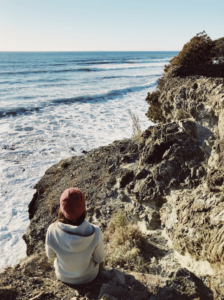 Note down swell direction, swell period, wind, and tide along with your observations about wave quality. Over time, you’ll start seeing patterns that can refine your predictions.
Note down swell direction, swell period, wind, and tide along with your observations about wave quality. Over time, you’ll start seeing patterns that can refine your predictions.




